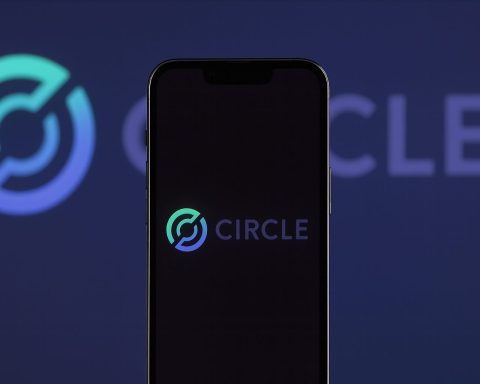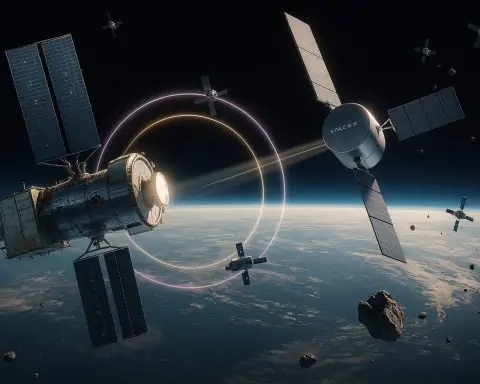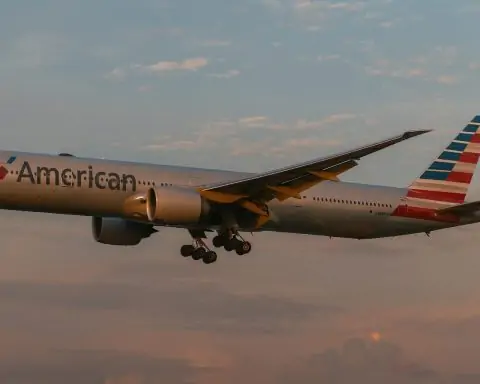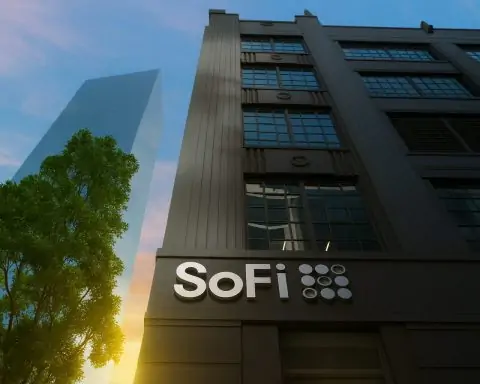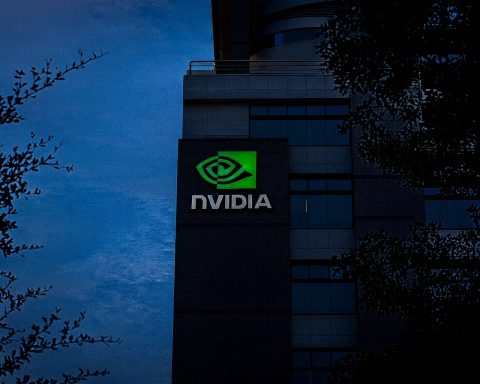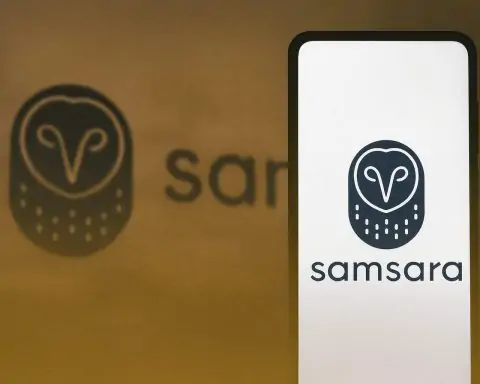- As of early 2025, Serbia had about 2.23 million fixed broadband subscribers.
- The median fixed broadband download speed reached 90.2 Mbps at the start of 2025.
- Telekom Srbija’s mts Fiber offers up to 1 Gbps speeds, with symmetric options such as 200/200, 400/400, and 600/600 Mbps, while SBB provides up to around 1 Gbps in fiber-connected buildings via FTTH or DOCSIS 3.1.
- Mobile networks cover ~99% of the population with 3G and over 90% with 4G, and 96.6% of mobile connections are broadband-capable (3G/4G/5G) as of January 2025.
- As of 2025, Serbia has not launched commercial 5G services yet; a spectrum auction is planned for Q4 2025 and deployment is expected to begin in 2026, with targets of about 10% territory in 2026 and around 40% by end-2027.
- The Rural Broadband Project, funded by roughly €120 million in state funds, €36 million in EU grants, and €118 million in EBRD loans, aims to connect 600 rural settlements (about 128,000 households and 720 schools) with 1 Gbps fiber and achieve 99% village coverage by end-2025.
- Telekom Srbija (mts) holds about 56% of fixed internet subscriptions, while Serbia Broadband (SBB) holds about 27%.
- The average monthly cost for a 60 Mbps+ fixed broadband plan with unlimited data is about $20 (€18–€19).
- Serbia’s broadband is among the cheaper in Europe, ranking 32nd cheapest globally according to techjury.net.
- Starlink is poised to begin operations in Serbia in 2025, with a roughly $500 dish-and-router kit and about $90 per month, delivering typical speeds of 50–150 Mbps and latency of 20–40 ms.
Serbia’s internet landscape in 2025 reflects significant progress in broadband connectivity alongside new developments on the horizon. Fixed fiber networks and 4G mobile coverage have expanded to reach most of the population, while government initiatives aim to close the remaining digital divide between cities and villages. This report provides a comprehensive overview of Serbia’s internet access, including the state of fixed broadband infrastructure, mobile internet performance, urban–rural availability gaps, key service providers, pricing and speeds, policy initiatives, the arrival of satellite internet, and the challenges and opportunities shaping Serbia’s connected future.
Fixed Broadband Infrastructure
Serbia has built a robust fixed broadband infrastructure that reaches the majority of households, especially in urban areas. As of early 2025, there were about 2.23 million fixed broadband subscribers in the country, up from 2.20 million at the end of 2024 [1]. This translates to roughly 75 fixed broadband subscriptions per 100 households (as of end-2022) [2], a level on par with many European markets. The fixed network is a mix of digital subscriber line (xDSL over telephone copper), cable broadband, and increasingly fiber-optic (FTTH) connections. Legacy DSL still exists but is gradually being supplanted by far faster fiber and cable systems in both cities and smaller towns. The incumbent operator Telekom Srbija has been actively deploying fiber-to-the-home, while cable operator SBB (Serbia Broadband) has upgraded many cable nodes to support higher speeds (including DOCSIS 3.1) and is also investing in fiber in select areas.
High-speed fiber coverage has grown substantially in recent years, leading to noticeable improvements in average connection speeds. Median fixed broadband download speed in Serbia reached 90.2 Mbps at the start of 2025 [3], a 25.7% year-on-year increase [4] thanks to ongoing fiber rollouts and network upgrades. In major cities like Belgrade and Novi Sad, gigabit-speed fiber plans are now available to consumers, and even secondary cities benefit from 100+ Mbps offerings. According to Serbia’s national broadband strategy, the goal was for “high-quality internet with speed above 100 Mbps” to be available to all citizens by end of 2023 [5]. While that 2023 target was ambitious, it has been substantially met in urban zones and is on track to be fulfilled countrywide by 2025 through continued fiber deployments and subsidies for rural broadband (discussed below). By 2025, an estimated 85.6% of Serbian households had an internet connection of some kind [6], underscoring the reach of fixed (and fixed-wireless) broadband infrastructure.
Network modernization is evident in the prevalence of next-generation access technologies. Telekom Srbija’s fiber network (branded “mts Fiber” services) offers plans up to 1 Gbps, and the operator has even introduced symmetric fiber packages (e.g. 200/200, 400/400, 600/600 Mbps) to cater to advanced users. Cable operator SBB also advertises speeds up to the hundreds of Mbps (and up to ~1 Gbps in certain fiber-connected buildings). These ultra-fast options mark a leap from a few years ago, when over half of fixed subscribers were limited to 10–30 Mbps DSL plans [7]. Today, broadband quality in Serbia is markedly improved, enabling smooth streaming, video conferencing, and other data-intensive applications across much of the country.
Mobile Internet Coverage and Performance
Mobile broadband is widespread and a crucial component of Serbia’s internet ecosystem. The country has three mobile network operators – state-owned Telekom Srbija (operating under the mts brand), Yettel Serbia (formerly Telenor, owned by PPF Group), and A1 Srbija (part of Telekom Austria Group) [8]. As of Q1 2025 Serbia had about 8.03 million mobile subscribers (active SIMs) [9], which is higher than the population (~6.6 million) due to many users owning multiple SIMs (for work, personal, data, etc.). Mobile penetration stands around 120–130% of the population [10], reflecting a mature market. Importantly, 96.6% of mobile connections are “broadband” (3G/4G/5G) capable [11] – essentially all subscribers are using modern data-capable networks, even if not everyone purchases data plans.
Coverage: 3G networks (UMTS) have near-universal coverage (about 99% of the population), and 4G/LTE networks cover well over 90% of the population [12]. All three operators have extensive 4G infrastructure; in fact, the largest operator (Telekom Srbija) reports over 85% territorial coverage with 4G and essentially full population coverage (≈98–99%) on 4G when its network is combined with rivals’ [13] [14]. This means that in virtually any city or major village, users have access to fast mobile internet. Even many remote areas have at least basic 4G or fallback 3G coverage, barring the most sparsely populated pockets (e.g. deep mountain regions). Network performance is solid: median mobile download speed was about 59 Mbps as of January 2025 [15], having risen ~17% over the previous year as operators expanded LTE Advanced and began limited 5G trials. By mid-2025, some analyses showed Serbia’s median mobile speeds around 60–70 Mbps, putting it in the middle tier of European countries and slightly ahead of neighbors like Bulgaria [16] [17]. Typical 4G latency is in the 25–35 ms range, suitable for most online applications.
5G status: Notably, Serbia has not yet launched commercial 5G services as of 2025, making it one of the few European countries still without 5G active [18] [19]. The 5G rollout was initially expected in 2020–2021 but faced delays. The government adopted a new strategy for electronic communications development up to 2027, which includes a roadmap for 5G introduction [20] [21]. According to this strategy, the regulator RATEL plans to auction 5G spectrum licenses in Q4 2025, with network deployment to start in 2026 [22] [23]. Early targets envision 10% of Serbia’s territory covered by 5G in 2026 (including parts of Belgrade, especially in time for the EXPO 2027 event), expanding to about 40% coverage by end of 2027 [24]. All three mobile operators are expected to participate in the 5G spectrum auction once the government finalizes the rulebook and security conditions (Serbia is aligning with the EU’s 5G security toolbox before issuance of licenses) [25]. In the interim, operators have continued to densify 4G networks and test 5G-ready equipment. The absence of 5G so far has limited ultra-high-bandwidth mobile use cases, but for the average consumer, 4G has been sufficient for smartphones and even home wireless broadband needs. The upcoming arrival of 5G presents an opportunity to boost mobile capacity and offer new services (IoT, smart city applications, fixed wireless access at fiber-like speeds) in the near future.
Internet Availability in Urban vs. Rural Areas
Like many countries, Serbia faces a digital divide between urban and rural areas, though this gap has been narrowing thanks to targeted investments. In cities and large towns, internet access is nearly ubiquitous – about 93% of urban households have an internet connection (fixed or mobile), according to survey data, and broadband options from multiple providers [26]. Urban residents often enjoy fiber-to-the-home or high-speed cable internet, and strong 4G mobile signals from all operators. By contrast, in some rural villages and remote settlements, connectivity has historically been less accessible. It’s estimated that only roughly 70–80% of rural households had internet access as of the early 2020s, indicating a substantial minority still offline or reliant on slow connections. Gaps have been due to lower commercial incentive for providers to build out fiber or cable in sparsely populated areas, leaving some rural users with old copper lines or only mobile broadband as an option.
The Serbian government has made rural connectivity a top priority, recognizing that modern “digital roads” are as important as highways for economic development [27] [28]. By 2023, about 75% of Serbia’s territory was covered by high-speed internet infrastructure (primarily the populated areas) [29]. To bring broadband to the remaining underserved areas, the government launched the Broadband Telecommunications Infrastructure Construction Project for Rural Areas, a nationwide initiative co-funded with international partners. In partnership with the EU and European Bank for Reconstruction and Development (EBRD), Serbia is rolling out mid-mile fiber infrastructure to “white zones” – rural communities that lacked any high-speed network [30]. This project, which is split into three phases, aims to connect 600 rural settlements (including around 128,000 households and 720 schools) to broadband by the end of 2025 [31] [32]. Fiber-optic cables (over 4,700 km of them) are being laid to reach village centers and schools, with 1 Gbps-capable connections for educational facilities [33]. Households along the route gain the ability to subscribe to service from retail ISPs, since the backbone is financed publicly but last-mile connections are offered by telecom operators in a competitive model [34].
As a result of these efforts, the government projects that 99% of all villages will have access to high-speed internet by end of 2025 [35]. Prime Minister Ana Brnabić emphasized that bringing broadband to villages will enable young people to study, work, and remain in their hometowns, preventing depopulation of rural areas [36] [37]. The rural broadband rollout has a budget of roughly €120 million in state funding plus €36 million in EU grants and €118 million in EBRD loans, illustrating a significant public investment in digital inclusion [38] [39]. Already by early 2024, pilot locations saw villagers getting fiber internet speeds over 100 Mb/s where previously little to no broadband existed [40]. While a small fraction of extremely remote or hard-to-reach households may still rely on satellite or mobile solutions, Serbia’s aggressive push means the urban–rural gap in connectivity is set to all but disappear in the next couple of years. In summary, urban areas enjoy near-complete high-speed coverage, and rural areas are quickly catching up, moving Serbia toward universal internet availability.
Key Internet Service Providers and Offerings
Serbia’s telecom market features a mix of state-owned and private operators. The fixed broadband segment is dominated by two players – Telekom Srbija and Serbia Broadband (SBB) – which together control over 80% of subscriptions [41]. Several smaller ISPs serve niche markets. In mobile, three nationwide operators compete. The table below summarizes the major providers and their roles:
Major Fixed Broadband Providers in Serbia (2025)
| Provider | ~Market Share (Fixed Internet) [42] | Network & Services |
|---|---|---|
| Telekom Srbija (mts) | ~56% | Incumbent telco. Operates xDSL and extensive FTTH across Serbia. Offers nationwide coverage, with fiber in cities (plans up to 1 Gbps) and DSL in outlying areas. Also provides mobile and pay-TV services (“mts” brand) [43]. |
| Serbia Broadband (SBB) | ~27% | Largest alternative ISP (part of United Group). Runs cable broadband (DOCSIS) networks in urban centers and is expanding fiber in some locations. Offers triple-play (internet, TV, phone) with speeds up to ~1 Gbps on hybrid fiber-coax. Strong presence in major cities. |
| Yettel Serbia | ~6% | Primarily a mobile operator, Yettel has begun offering fixed wireless broadband (4G/LTE routers for home internet). Its fixed internet share (6%) comes from these home LTE broadband subscribers. Limited or no wired infrastructure of its own for fixed services. |
| Other ISPs (e.g. Orion, PoštaNet) | ~11% combined | Dozens of smaller providers. Orion Telecom provides fiber and wireless in select areas (even offering niche 10 Gbps fiber plans in Belgrade [44]), PoštaNet (run by Serbian Post) offers DSL/cable in some regions, and various local cable operators and WISPs serve rural towns. These collectively account for the remaining market share. |
As shown, Telekom Srbija is the heavyweight in fixed broadband. It is a majority state-owned company and the historical incumbent, operating the copper telephone network (now largely upgraded or overbuilt with fiber). Telekom markets fiber plans under the mts brand and has leveraged its vast infrastructure to acquire ~56% of fixed internet customers [45]. Notably, Telekom has in recent years also acquired several local cable operators (e.g. Kopernikus, Radijus Vektor) and integrated them under its “Supernova” subsidiary brand, further consolidating its reach.
The main challenger is SBB, a private company known for its cable TV and broadband offerings. SBB’s cable network passes millions of households, and the company is synonymous with high-speed internet and digital TV in Serbia. With around 27% of fixed subscribers [46], SBB is the second-largest ISP and often competes head-to-head with Telekom in urban markets. SBB’s introduction of Docsis 3.1 technology has allowed it to boost cable internet speeds into the several-hundred-Mbps range; in buildings where SBB deploys FTTH, gigabit speeds are possible.
Mobile network operators also play a role in internet access. Many Serbians, especially younger users or those in remote spots, rely on mobile data or wireless routers for home connectivity. The three MNOs have the following approximate market shares by subscribers:
Mobile Network Operators in Serbia (2025)
| Mobile Operator | Market Share (Mobile) [47] [48] | Network Technologies | Coverage and Notes |
|---|---|---|---|
| Telekom Srbija (mts) | ~43% | 2G / 3G / 4G (LTE); 5G-ready (launch pending) | Largest mobile carrier. Reaches ~99% of population with 3G/4G. Operates ~3,200 base stations including many LTE-A sites [49] [50]. No 5G service yet (awaiting 2025 spectrum auction). Leverages its fixed network for backhaul; offers converged plans (mobile + fiber). |
| Yettel Serbia | ~33% | 2G / 3G / 4G; 5G-ready (launch pending) | Formerly Telenor, now Czech-owned. Strong 4G network covering ~95%+ population. Competes on mobile data packages and quality. Also provides fixed-wireless home internet (LTE). Will participate in upcoming 5G auction. |
| A1 Srbija | ~24% | 2G / 3G / 4G; 5G-ready (launch pending) | Part of Telekom Austria’s A1 group. Youngest operator (launched 2007). Has nationwide 4G covering >90% pop. [51], focusing on urban and highway coverage. Expected to roll out 5G post-auction. Also experimenting with fixed-wireless access. |
Telekom, Yettel, and A1 have a roughly 43/33/24 percent subscriber split, respectively [52]. All three offer broadly similar mobile services (voice/SMS and data plans), and each has invested in extensive 4G LTE networks. Telekom Srbija often touts the widest coverage, especially in rural areas, due to its legacy advantage and larger tower count, while Yettel and A1 compete on pricing and innovations. For example, Yettel has been aggressive in marketing unlimited mobile data plans and home LTE broadband modems, which helped it capture a niche in fixed broadband (reflected in its 6% share there).
On the service offerings side, consumers in Serbia have a range of choices. Fixed broadband packages typically come bundled with digital TV and phone. Telekom’s fiber plans range from 100 Mbps up to 1 Gbps (with options for symmetric speeds on certain packages) [53]. SBB’s packages often start around 50–100 Mbps and go up to 300 Mbps or higher, plus premium TV content (the company is known for its “EON” TV platform). Pricing is competitive (discussed in the next section), making high-speed internet relatively affordable. Mobile operators offer 4G data plans including prepaid options (with daily/weekly data passes) and postpaid plans with generous data caps or unlimited data. With the pending introduction of 5G, these operators are expected to introduce new plans for ultra-fast wireless broadband, though specifics will depend on the spectrum auction outcomes in late 2025.
In summary, Telekom Srbija and SBB are the key fixed-line players, with the former also leading in mobile. Yettel and A1 primarily compete in mobile but are dipping into home internet via wireless. A handful of smaller ISPs provide additional competition in certain locales or specialized segments. This competitive landscape has generally benefited Serbian consumers by keeping prices reasonable and spurring network upgrades – though some observers note that Telekom’s dominance (as a state-backed operator with both fixed and mobile assets) creates a high barrier to entry for new competitors.
Pricing, Speeds, and Service Quality
Internet prices in Serbia are relatively low by European standards, contributing to the high uptake. Fixed broadband in particular is quite affordable: the average monthly cost for a broadband plan (60 Mbps or higher, unlimited data) is around $20 (approx. €18–€19) [54]. This places Serbia among the cheaper countries in Europe for internet access – well below the European average of ~$31 per month [55] [56]. In local currency, a typical home broadband subscription (for example, a 50–100 Mbps cable/DSL plan) might cost about 3,000 dinars per month (≈€25) [57]. Even the top-tier fiber packages (e.g. 1 Gbps with TV) often price out around 6,000–8,000 RSD (€50–€70), which is considered reasonable compared to Western Europe. These price points have improved the affordability of internet for Serbian households, although one must also consider local income levels (the average wage in Serbia is lower than the EU average). Nonetheless, in international comparisons, Serbia’s broadband is a bargain – for instance, it ranks as the 32nd cheapest out of ~200 countries analyzed, cheaper than all but a few European countries like Ukraine and Russia [58] [59].
Mobile data pricing is similarly customer-friendly. All three mobile operators offer competitively priced bundles. It’s common to see unlimited voice/SMS plus 10–20 GB data for around 1,500 RSD (€12–€13) monthly on postpaid plans, or even unlimited data on higher-end plans for ~2,500–3,000 RSD (€20–€25). Prepaid users can get daily unlimited social media passes or a few GB for just a couple of euros. According to the International Telecommunication Union, by the end of 2022 the cost of 1.5 GB of mobile data in Serbia was under 1% of average monthly income, which meets the affordability target set by the UN Broadband Commission. This competitive mobile pricing has encouraged heavy usage: mobile users increasingly treat 4G as a substitute for Wi-Fi, and mobile broadband traffic has grown steadily (a trend likely to continue once 5G arrives).
In terms of speed and quality, Serbia has made great strides. The median fixed broadband download speed of ~90 Mbps mentioned earlier places Serbia roughly around the 50th rank globally for fixed internet speeds [60] – a solid position, even if not yet at the very top. Many urban customers on fiber connections actually experience hundreds of Mbps speeds in practice, while those still on DSL in rural areas might see 10–20 Mbps, which is adequate for basic needs. The ongoing replacement of copper with fiber is steadily raising the country’s average speeds year by year. Upload speeds on fiber plans are often symmetric or at least a substantial fraction of download, which benefits content creators, remote workers, and cloud users in Serbia.
Mobile network quality is generally good as well. A January 2025 analysis by Ookla showed median mobile downloads around 59 Mbps and uploads around 13 Mbps [61] [62]. By mid-2025, some reports indicated median mobile speeds exceeding 70 Mbps [63], suggesting continued improvements. Serbia’s mobile broadband was cited as having excellent 4G availability, with users able to connect to 4G >86% of the time on average (Opensignal measured Serbia’s 4G availability at 86.9% in late 2024, on par with some EU countries). Furthermore, network consistency is strong: an Opensignal “Global Mobile Network Experience” report ranked Serbia 25th globally in overall mobile experience in Q1 2025, noting high scores for video streaming and gaming on 4G connections [64]. While these quality metrics are commendable, they also highlight room for improvement – the top countries have much faster 5G-driven metrics. Once Serbia launches 5G, we can expect latency to drop further (closer to 10 ms on 5G) and peak speeds to climb into the hundreds of Mbps or even beyond 1 Gbps for users with compatible devices.
Another aspect of service quality is reliability. Both fixed and mobile networks in Serbia are considered reliable with minimal downtime. Power outages or infrastructure issues occasionally cause localized internet disruptions (as in any country), but widespread outages are rare. ISPs like Telekom and SBB have invested in network redundancy and backup power for their equipment. According to RATEL reports, the percentage of time broadband networks are available is very high (well above 99.5%). Customer satisfaction surveys often point to network congestion in peak hours as a minor issue for some cable and mobile users, but overall satisfaction with speed and uptime has improved alongside infrastructure upgrades.
In summary, Serbian consumers enjoy fast and affordable internet by regional standards. Prices for broadband are among the lowest in Europe [65], and speeds have risen dramatically as fiber and LTE deployments advance. The combination of low cost and solid performance bodes well for continued growth in internet usage and the digital economy.
Government Policies and Digital Connectivity Initiatives
The Serbian government has been actively shaping policies to improve digital connectivity, recognizing it as a foundation for economic and social development. A key policy framework is the country’s Strategy for the Development of Information Society and Information Security (2021–2026) [66]. This strategy outlines goals such as expanding broadband infrastructure, increasing digital literacy, and aligning with EU digital single market norms. In August 2024, the government adopted a new Strategy for the Development of Electronic Communications Networks until 2027, which specifically focuses on broadband and 5G deployment [67] [68].
One concrete result of these strategies is the Law on Broadband that Serbia has been preparing, aiming to harmonize with the EU’s Gigabit Infrastructure Act. This law (still awaiting final adoption as of late 2024) will streamline regulations for deploying high-speed networks and reduce barriers for operators to lay fiber or install base stations [69]. It is expected to mandate easier access to rights-of-way, infrastructure sharing, and possibly set targets for minimum broadband speeds nation-wide, mirroring EU directives.
As discussed, the government’s Rural Broadband Project is a flagship initiative. High-level political support, including from the Prime Minister, has ensured funding and focus for connecting rural communities. The project leverages public-private partnerships: the state builds out middle-mile fiber and then telecom operators compete to deliver last-mile service to customers. This approach is meant to ensure long-term sustainability, as private ISPs will maintain and operate connections once built. The close cooperation with the EU on this initiative also ties into Serbia’s EU accession aspirations – it is part of the Western Balkans Digital Agenda, wherein the EU supports improved digital infrastructure in candidate countries [70]. Such projects not only connect people but also connect schools (the Connected Schools program, completed in 2021 with EIB funding, already provided internet and IT equipment to schools [71], and now the rural phases will bring 1 Gbps fiber to even the smallest village schools [72]). The government has highlighted that digital education, e-government services, and e-health initiatives all depend on having robust internet nationwide [73] [74].
On the mobile side, government policy has been cautious but deliberate regarding 5G. Initial plans to launch 5G by 2020 were postponed due to various factors (market readiness, regulatory prep, even some public skepticism). The new 5G roadmap calls for finalizing the regulatory rulebook by Q3 2024 and conducting the 5G spectrum auction by late 2025 [75]. The government and regulator RATEL have emphasized security and alignment with EU guidelines (e.g., examining vendor security as per the EU 5G cybersecurity toolbox) before awarding licenses [76]. This careful approach indicates the government wants to ensure a smooth and secure 5G rollout. In the interim, some policy support has gone into improving 4G coverage – for example, incentives for operators to extend coverage to under-served areas and allowing spectrum refarming for better rural LTE coverage.
Another area of policy is digital services and literacy. The government established an Office for IT and eGovernment which has implemented numerous e-services (online citizen portals, eID, etc.) and championed projects like the National Broadband Plan and Open Data Initiative [77] [78]. The state also invests in tech education (coding introduced in schools, tech parks for startups) which indirectly boosts internet adoption and usage. Additionally, Serbia’s regulatory agency RATEL monitors service quality and enforces consumer protection in telecom – such as ensuring net neutrality, managing .rs domain affairs, and handling complaints.
International support complements national policy. Aside from EU and EBRD involvement, organizations like the ITU and World Bank have provided guidance or benchmarks (the ITU, for instance, ranks Serbia fairly high in ICT Development Index and notes near-total 4G population coverage). Serbia has also joined regional agreements to eliminate roaming charges in the Western Balkans, which took effect in July 2021, making mobile internet use across neighboring countries cheaper for Serbian users and vice versa.
In summary, Serbian authorities are proactively steering the country toward full digital connectivity. Key government initiatives include funding rural broadband expansion, preparing a modern broadband law aligned with EU standards, orchestrating the introduction of 5G with careful regulation, and promoting digital literacy and e-services. The overarching vision is to ensure that fast, reliable internet is available “in every home, in every village” so that all citizens can participate in the digital economy. Progress on these initiatives has been steady, and continued political commitment suggests Serbia will achieve virtually nationwide high-speed internet access on schedule.
Satellite Internet Access: Starlink and Beyond
An exciting new development in Serbia’s internet scene is the impending arrival of satellite broadband services. In particular, Starlink, the low-Earth orbit (LEO) satellite internet constellation operated by Elon Musk’s SpaceX, is poised to begin operations in Serbia by 2024–2025. On Starlink’s official availability map, Serbia (as well as neighboring Montenegro) is marked for service start in 2024, pending regulatory approval [79] [80]. For a time, Serbia was one of the few countries in Europe without Starlink coverage (Bosnia and Herzegovina being another, due to licensing delays) [81]. However, this is changing as Serbian regulators and Starlink have worked through the authorization process.
Starlink’s local subsidiary, Starlink d.o.o. Belgrade, has been in talks with RATEL since 2021 [82] [83]. The licensing process took some time – reportedly, initial applications were deemed incomplete, and RATEL did not immediately grant a permit, citing the need for all legal conditions to be fulfilled [84] [85]. By mid-2024, RATEL confirmed that Starlink was in the final stage of obtaining the necessary permit to operate in Serbia [86]. The regulator stated that once Starlink meets all requirements and submits complete documentation, it can register as an official electronic communications operator in Serbia [87] [88]. According to business reports, negotiations and coordination have been ongoing continuously, and no insurmountable issues remain – it’s mostly procedural now [89] [90]. This suggests that Starlink service will very likely go live in Serbia sometime in 2025, if not late 2024 [91]. Indeed, as of early 2025, the expectation is that Starlink will “begin operations in Serbia once it meets all legal requirements,” which appears imminent [92] [93].
For Serbian consumers, what will Starlink offer? Starlink promises high-speed internet delivered via satellite to virtually any location – particularly attractive for rural users in areas where fiber or 4G is not available or is unreliable [94]. A Starlink kit consists of a small dish antenna and Wi-Fi router, which the user installs at home. The dish connects to SpaceX’s orbiting satellites to provide broadband. Typical Starlink speeds range from ~50 Mbps up to 150+ Mbps, with latency around 20–40 ms – far better than older satellite services and comparable to basic terrestrial broadband. In Serbia, Starlink would give remote households (e.g., in mountainous hamlets or very sparsely populated regions) an option to get decent internet without waiting for fiber cables to reach them.
However, Starlink’s cost is relatively high in the local context. The one-time equipment cost is about $500 for the dish and router kit [95]. Monthly subscription fees are expected to be on the order of $90 per month (the exact price “will depend on the country,” but $90 was cited as a typical fee) [96]. These prices are significantly above what an average Serbian household pays for wired broadband (~$20) or even a generous mobile data plan. Thus, Starlink will likely be a niche solution – targeted at those who absolutely need connectivity in areas where alternatives are absent or extremely slow. A telecom expert in Serbia observed that while Starlink is a “significant advantage for rural areas”, challenges like weather-related disruptions (heavy rain or snow can affect satellite signals) and the high cost of equipment and subscription could limit its broader adoption in Serbia [97]. In other words, Starlink will be invaluable for some (e.g. a remote farm that currently has no internet or a tourist lodge in a mountain), but it is not expected to take a large market share from terrestrial providers in towns and cities [98]. The Serbian market’s extensive fiber and 4G coverage means that for most people, land-based networks suffice or will soon be available.
Aside from Starlink, other satellite options remain limited. Traditional geostationary satellite internet (from providers like Viasat or local satellite ISPs) has existed but saw very low uptake in Serbia due to high costs and latency over 600 ms. Those services were mostly used by a handful of businesses or government branches in remote spots. With Starlink’s entry, older satcom offerings may become obsolete. Another LEO constellation, OneWeb, is also expanding globally, but it focuses more on enterprise and mobile backhaul; there’s no indication of consumer OneWeb service in Serbia yet (and OneWeb’s coverage for the region is planned via partners possibly in the future).
It’s also worth noting that Serbia’s neighbors are getting Starlink around the same time. For instance, Starlink became available in Kosovo in mid-2023, and North Macedonia and Albania already have active Starlink service. Montenegro, as mentioned, is on the same timeline as Serbia. So regionally, the Western Balkans will have comprehensive satellite internet coverage by 2025. This could facilitate cross-border connectivity in remote border areas and provide a backup option for disaster recovery (e.g., if land networks are disrupted, satellite links can keep critical services online).
In conclusion, satellite internet – especially Starlink – adds a new dimension to Serbia’s internet ecosystem. By 2025, Serbian consumers and businesses in connectivity dead zones will have the choice to get online via satellite. While the high price and competition from expanding fiber/4G networks mean Starlink won’t be mainstream for most, it is a game-changer for those few percent of users for whom no other fast option exists. The government’s willingness to license Starlink reflects a pragmatic approach to ensuring everyone can be connected, one way or another. As technology advances, costs may come down, and satellite broadband could play a modest but important complementary role alongside terrestrial networks in Serbia.
Challenges and Opportunities in Serbia’s Internet Ecosystem
Finally, it’s important to recognize the key challenges and opportunities facing internet development in Serbia as of 2025:
Challenges:
- Closing the Last Gaps: While most of the population is online, there remains a challenge to reach the remaining ~8% of Serbians who are still offline [99]. These are predominantly people in very remote rural areas, the elderly, or low-income households. Ensuring 100% coverage (geographic and demographic) and adoption will require continued investment in rural infrastructure (fiber or wireless) and digital literacy programs for late-adopters such as seniors.
- 5G Rollout Delays: Serbia has fallen behind many of its European peers in launching 5G. The delay (5G will only start rolling out in 2026 [100]) means the country risks missing out on early 5G-enabled innovations and could be less attractive for certain tech investments in the interim. The challenge is to expedite the 5G spectrum auction and deployment without further delays, while managing security concerns and ensuring that operators can afford the investment. Catching up on 5G will be crucial for Serbia’s industry (e.g. smart manufacturing, autonomous systems) and for meeting the exploding bandwidth demand of the coming years.
- Market Competition and Monopolies: The broadband market structure, being dominated by one state-owned telco (Telekom) and one major private cable company (SBB), raises concerns about duopoly or monopolistic behavior [101] [102]. There have been past allegations of Telekom using its government links to stifle competitors, and United Group (SBB’s parent) has complained about unfair practices. Preserving a level playing field and healthy competition is a challenge for regulators (RATEL). If competition erodes, it could affect consumer prices and innovation negatively. Thus far, RATEL reports indicate the two giants maintain a tight grip (over 80% combined share) [103], so encouraging smaller ISPs or possibly a new entrant (like a utility company or a foreign investor) could be beneficial.
- Affordability for Low-Income Users: Although internet service is inexpensive in global terms, for low-income households in Serbia even €20 per month can be burdensome. Roughly a quarter of Serbians have incomes below the poverty line, and they might forgo home internet or rely solely on limited mobile data. The government’s challenge is to ensure affordable options (perhaps subsidized plans or community internet centers) so that cost is not a barrier for anyone. The introduction of social tariffs or expanding free Wi-Fi in public spaces could help address this.
- Cybersecurity and Regulation: With greater connectivity comes the challenge of maintaining robust cybersecurity and privacy. Serbia is still aligning its laws with the EU’s NIS Directive on network security [104]. Recent years saw instances of cyberattacks and online disinformation campaigns domestically. Strengthening CERT (Cyber Emergency Response) capabilities and protecting critical digital infrastructure is an ongoing challenge. Additionally, Serbia must continue to update its regulatory framework to cover new technologies (like regulating 5G networks, data protection per GDPR standards, etc.), which can be complex and resource-intensive for institutions.
Opportunities:
- Economic Growth via Digitalization: Improved internet access opens opportunities for Serbia’s economy. With nationwide broadband, rural entrepreneurship can flourish (e.g. IT freelancers or e-commerce from small towns, precision agriculture using IoT). The strong tech talent pool in Serbia (especially in programming and outsourcing companies) can expand further now that high-speed connectivity is nearly everywhere. Serbia’s IT/export sector has been growing ~20% annually [105] – better connectivity will support continued growth, startup creation, and possibly attract foreign investors who require reliable infrastructure.
- Leverage Low Costs as a Hub: Serbia’s combination of high internet penetration (92%) and low broadband costs [106] is somewhat unique. This could be marketed to attract digital nomads or tech companies to set up operations, since they can obtain cheap yet fast internet and a skilled workforce at lower cost than in Western Europe. The government has considered digital nomad visa policies to capitalize on this. Additionally, as remote work becomes global, Serbia could position itself as an attractive base due to its connectivity and cost advantages.
- 5G as a Catalyst (despite delay): When 5G does arrive (from 2026 onward), Serbia has the opportunity to deploy the latest generation equipment (possibly leapfrogging some early technical issues faced elsewhere) and to quickly cover key industrial and urban areas. This can catalyze projects in smart cities (Belgrade and Novi Sad are already planning smart infrastructure), autonomous drones, advanced telemedicine, and more. There is also an opportunity to develop local 5G use-cases tailored to Serbia’s needs (for example, 5G corridors along highways for logistics, or 5G in agriculture for smart farming in Vojvodina’s plains).
- Satellite and Future Tech: The arrival of Starlink and similar LEO satellite services offers a new back-up and expansion path. For example, satellite internet could ensure resilience (backup connectivity during outages or emergencies). It also means Serbia could connect remote research stations, border outposts, or rural tourism facilities to high-speed internet without waiting for fiber. In the future, technologies like High-Altitude Platforms (HAPS) or 6G could further enhance coverage. By staying open to new technologies (as Serbia did by engaging with Starlink), the country can quickly benefit from innovations and not be left behind.
- Regional Digital Integration: Serbia is the largest market in the Western Balkans and could serve as a regional digital hub. Initiatives like the abolition of regional roaming fees and the creation of a common regional market in ICT services mean Serbian companies can easily expand digital services to neighboring countries. Likewise, improved internet in Serbia allows cross-border digital collaborations (for instance, telemedicine partnerships with hospitals in Bosnia, or online education programs shared with Montenegro). Serbia’s eventual EU accession will also integrate it into EU digital programs, bringing in funding and opportunities for its tech companies and infrastructure development.
In summary, Serbia’s internet ecosystem in 2025 stands at a high point of achievement with momentum for further gains. Key challenges such as ensuring truly universal access, launching 5G, and maintaining healthy competition will require continued effort from policymakers and industry. Yet, the opportunities – from economic boosts, technological leapfrogging, to enhanced quality of life for citizens – are immense. Serbia has recognized that investing in internet connectivity is investing in the country’s future, and the payoffs of those investments are already visible. With prudent strategies and regional cooperation, Serbia is well positioned to fully join the ranks of digitally advanced nations in the coming years.
Sources:
- DataReportal, “Digital 2025: Serbia” (Jan 2025) – Key internet usage and speed statistics [107] [108] [109].
- RATEL (Serbian Regulatory Agency) Quarterly Report Q1 2025 – Telecom subscriber data for fixed and mobile markets [110] [111].
- Government of Serbia – Press release on rural broadband project (April 2023) [112] [113].
- EU Delegation to Serbia – “Connecting Rural Communities for Digital Future” (Feb 2024) [114] [115].
- SeeNews – “Serbia’s mobile phone subscribers fall in Q1 2025” (June 2025) [116] [117].
- International Trade Administration (U.S.) – Serbia ICT Market Guide (2022) [118] [119].
- Sarajevo Times – “Starlink arrives in Serbia and Montenegro” (Sept 2024) [120] [121].
- Serbia Business news – “Starlink poised to arrive in the region” (Feb 2025) [122] [123].
- Media Ownership Monitor Serbia – Technology report (2023) [124] [125].
- European Commission – Serbia 2024 Progress Report (Oct 2024), digital society section [126] [127].
References
1. seenews.com, 2. www.ratel.rs, 3. datareportal.com, 4. datareportal.com, 5. www.trade.gov, 6. serbia.mom-gmr.org, 7. www.trade.gov, 8. seenews.com, 9. seenews.com, 10. datareportal.com, 11. datareportal.com, 12. www.trade.gov, 13. www.trade.gov, 14. www.frequencycheck.com, 15. datareportal.com, 16. en.wikipedia.org, 17. en.wikipedia.org, 18. kossev.info, 19. seenews.com, 20. enlargement.ec.europa.eu, 21. enlargement.ec.europa.eu, 22. seenews.com, 23. seenews.com, 24. seenews.com, 25. enlargement.ec.europa.eu, 26. serbia.mom-gmr.org, 27. europa.rs, 28. europa.rs, 29. www.srbija.gov.rs, 30. europa.rs, 31. europa.rs, 32. www.srbija.gov.rs, 33. europa.rs, 34. www.srbija.gov.rs, 35. www.srbija.gov.rs, 36. europa.rs, 37. europa.rs, 38. europa.rs, 39. www.srbija.gov.rs, 40. www.srbija.gov.rs, 41. seenews.com, 42. seenews.com, 43. seenews.com, 44. oriontelekom.rs, 45. seenews.com, 46. seenews.com, 47. seenews.com, 48. seenews.com, 49. www.telecompaper.com, 50. www.trade.gov, 51. www.trade.gov, 52. seenews.com, 53. mts.rs, 54. techjury.net, 55. techjury.net, 56. techjury.net, 57. www.numbeo.com, 58. techjury.net, 59. worldpopulationreview.com, 60. en.wikipedia.org, 61. datareportal.com, 62. datareportal.com, 63. en.wikipedia.org, 64. www.opensignal.com, 65. techjury.net, 66. serbia.mom-gmr.org, 67. enlargement.ec.europa.eu, 68. enlargement.ec.europa.eu, 69. enlargement.ec.europa.eu, 70. europa.rs, 71. www.trade.gov, 72. europa.rs, 73. www.srbija.gov.rs, 74. europa.rs, 75. seenews.com, 76. enlargement.ec.europa.eu, 77. www.trade.gov, 78. www.trade.gov, 79. sarajevotimes.com, 80. sarajevotimes.com, 81. sarajevotimes.com, 82. serbia-business.eu, 83. serbia-business.eu, 84. sarajevotimes.com, 85. sarajevotimes.com, 86. sarajevotimes.com, 87. serbia-business.eu, 88. serbia-business.eu, 89. serbia-business.eu, 90. serbia-business.eu, 91. serbia-business.eu, 92. serbia-business.eu, 93. serbia-business.eu, 94. sarajevotimes.com, 95. sarajevotimes.com, 96. sarajevotimes.com, 97. serbia-business.eu, 98. serbia-business.eu, 99. datareportal.com, 100. seenews.com, 101. serbia.mom-gmr.org, 102. serbia.mom-gmr.org, 103. seenews.com, 104. www.trade.gov, 105. www.trade.gov, 106. techjury.net, 107. datareportal.com, 108. datareportal.com, 109. datareportal.com, 110. seenews.com, 111. seenews.com, 112. www.srbija.gov.rs, 113. www.srbija.gov.rs, 114. europa.rs, 115. europa.rs, 116. seenews.com, 117. seenews.com, 118. www.trade.gov, 119. www.trade.gov, 120. sarajevotimes.com, 121. sarajevotimes.com, 122. serbia-business.eu, 123. serbia-business.eu, 124. serbia.mom-gmr.org, 125. serbia.mom-gmr.org, 126. enlargement.ec.europa.eu, 127. enlargement.ec.europa.eu


